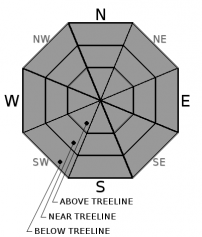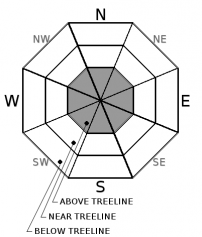| Friday | Friday Night | Saturday | |
|---|---|---|---|
| Weather: | Sunny | Partly cloudy becoming clear | Sunny then becoming partly cloudy |
| Temperatures: | 46 to 51 deg. F. | 26 to 31 deg. F. | 50 to 56 deg. F. |
| Mid Slope Winds: | Northeast | Variable | Southwest |
| Wind Speed: | Light with gusts to 30 mph in the morning | Light | Light in the morning increasing to 10 to 15 mph with gusts to 25 mph in the afternoon |
| Expected snowfall: | 0 | 0 | 0 |
| Friday | Friday Night | Saturday | |
|---|---|---|---|
| Weather: | Sunny | Partly cloudy becoming clear | Sunny then becoming partly cloudy |
| Temperatures: | 42 to 48 deg. F. | 24 to 29 deg. F. | 45 to 51 deg. F. |
| Ridge Top Winds: | Northeast | Variable | Southwest |
| Wind Speed: | 15 to 25 mph with gusts to 45 mph decreasing to 30 mph in the afternoon | Light | 10 to 15 mph with gusts to 30 mph |
| Expected snowfall: | 0 | 0 | 0 |


























